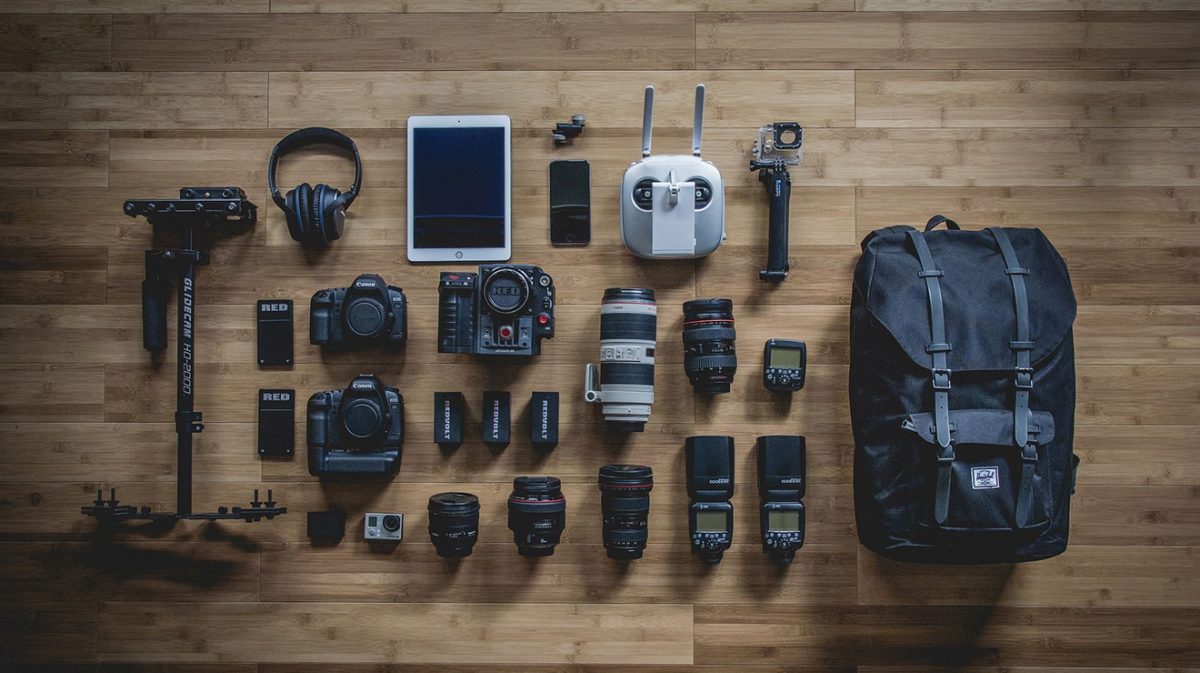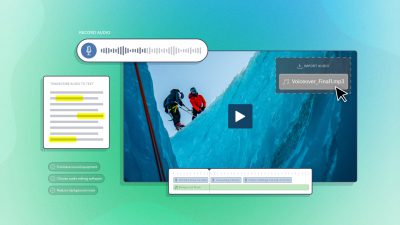The truth is, video production can require an awful lot of kit, especially if you’re starting from zero. So, we put together a list of our top ten must-haves for video production. This is stuff you absolutely need, and will be well worth the cost, because you’ll use it again and again. Keep reading to find out what made our list.
1. Camera
This one falls into the “absolutely necessary” category for obvious reasons. But before you start to stress about cost, know that while you can spend a lot on a camera, you don’t necessarily have to.
You can produce excellent video with the video you probably already have in your pocket; a smartphone. The problem with these tends to be sound. If you’re more than three feet away from the subject, the sound quality will be substandard. Luckily, you can always use an external microphone if sound quality is an issue.
The next step up from a phone would likely be a handheld camcorder. Yes, those still exist, and have gotten very affordable. Expect to gain a lot more control over the visuals in your shots compared to a phone, though the built-in microphone is likely to still be problematic.
If you’re ready for a new challenge, have a bigger budget, and don’t mind a steep learning curve, the next category would be DSLR cameras. Highly popular for both photography and videography, they are the camera of choice for many professionals. Far from a point-and-shoot, prepare to spend plenty of time getting up to speed on different settings.
Beyond DSLRs, you’re looking at the wide world of professional video cameras. These get very pricey, and might make more sense to rent for special projects than to purchase outright. Consider your ongoing video needs, and weigh them against the cost of acquiring a serious piece of gear such as this.
2. Camera bag
This will carry your essentials for every shoot. It should be padded and waterproof, with lots of compartments for keeping your bits and pieces organized.
If you’re mainly doing shoots in your office, look for an option with wheels that can double as storage. Not only will it be easier to move your heavy kit around, you’ll keep things nice and tidy too.
When traveling abroad, standard camera bags can often signal to pickpockets or thieves that you are carrying expensive gear. Going with a nondescript option can avoid making you appear to be a target.
3. Backup essentials
There’s nothing worse than trying to turn on your camera, and realizing it’s battery is dead. You’re going to need at least one spare camera battery, one spare memory card, and a battery charger or power cord just in case.
Organize these items the night before to make sure you aren’t scrambling on the day of. Once the shoot is over, immediately charge all batteries, and transfer data off the memory cards to free up space for the next shoot. If you make this a habit, you’ll never run out of power or space for making more video.
4. Tripod
Generally speaking, a tripod can make the difference between a professional-looking video or an amateurish one. There’s nothing worse than shaky filming, and almost nothing makes people click away from your video faster.
There are a wealth of options, from classic tripods, to smartphone stabilizers, gimbals, monopods, and more. The right option depends on your budget, the type of camera you’re using, and how much flexibility you require to get your shots.
Although we just said tripods are absolutely necessary, there are times when handheld shots are appropriate. Take lessons from Westworld and learn how to get handheld shots right in this post.
5. Shotgun mic
A shotgun microphone is highly directional, and produces good quality sound in a variety of environments, including both indoors or outdoors, in close range or at a wider distance. A shotgun is the type of mic you see used on Hollywood film sets (typically on a boom), and the smaller versions are affordable.
The shotgun mic is our favorite because it’s really versatile, so it’s great value for the money. You can find out more about your other options in our recent blog post on the basics of sound for video.
6. Boom Pole
A boom pole typically runs under $50, and allows you to be more precise when capturing sound. It will also help you keep the mic well out of the camera shot.
It’s also a very flexible piece of video equipment. You can use it in many improvised ways, beyond capturing sound. For instance, you can clip lights to it, or use it to hang a drop cloth as a backdrop. We find having one on hand can really help in a pinch.
7. Umbrella lights
You have a many options when it comes to lighting, and more than any category, this one is very budget-driven. The reason being that you can rely on household lights, or natural light, if you can’t afford to purchase specialty options.
Umbrella lights are a nice go-to. You can get a good quality pair for under $100 that will work well in a variety of situations. You can even negate the need for the fill light by using umbrella lights and reflective surfaces (mirrors or white walls) to achieve an ambient lighting effect.
Curious about the ins and outs of three-point lighting? Find out more from our post on the basics of lighting for video.
8. Extension cord
A high-quality extension cord will only run you about $30, and this can save you when you realize you’re running out of battery and you’re too far from a power source. It happens more than you’d think.
Also, depending on the shoot, you might need to reposition lights, which usually don’t run on batteries. To be able to get the exact right placement, you’ll want maximum flexibility when it comes to positioning your lights.
Be sure to tape down all cords and cables to avoid any trips or tumbles on set!
9. Editing workstation
If you’re going to be editing your own videos, you need a laptop or desktop computer that has the capabilities to handle editing software. That includes a good graphics card, the necessary inputs to get the video off of your camera, and ideally, a good-sized screen for viewing.
10. Video editing software
Again, this is only necessary if you plan to edit your own videos. Check out our recent post on video editing for more information on types of software packages available, and how to choose the best one for you.
Have anything to ask or add? We’re listening! Tweet to us at @SproutVideo or leave a comment below.








